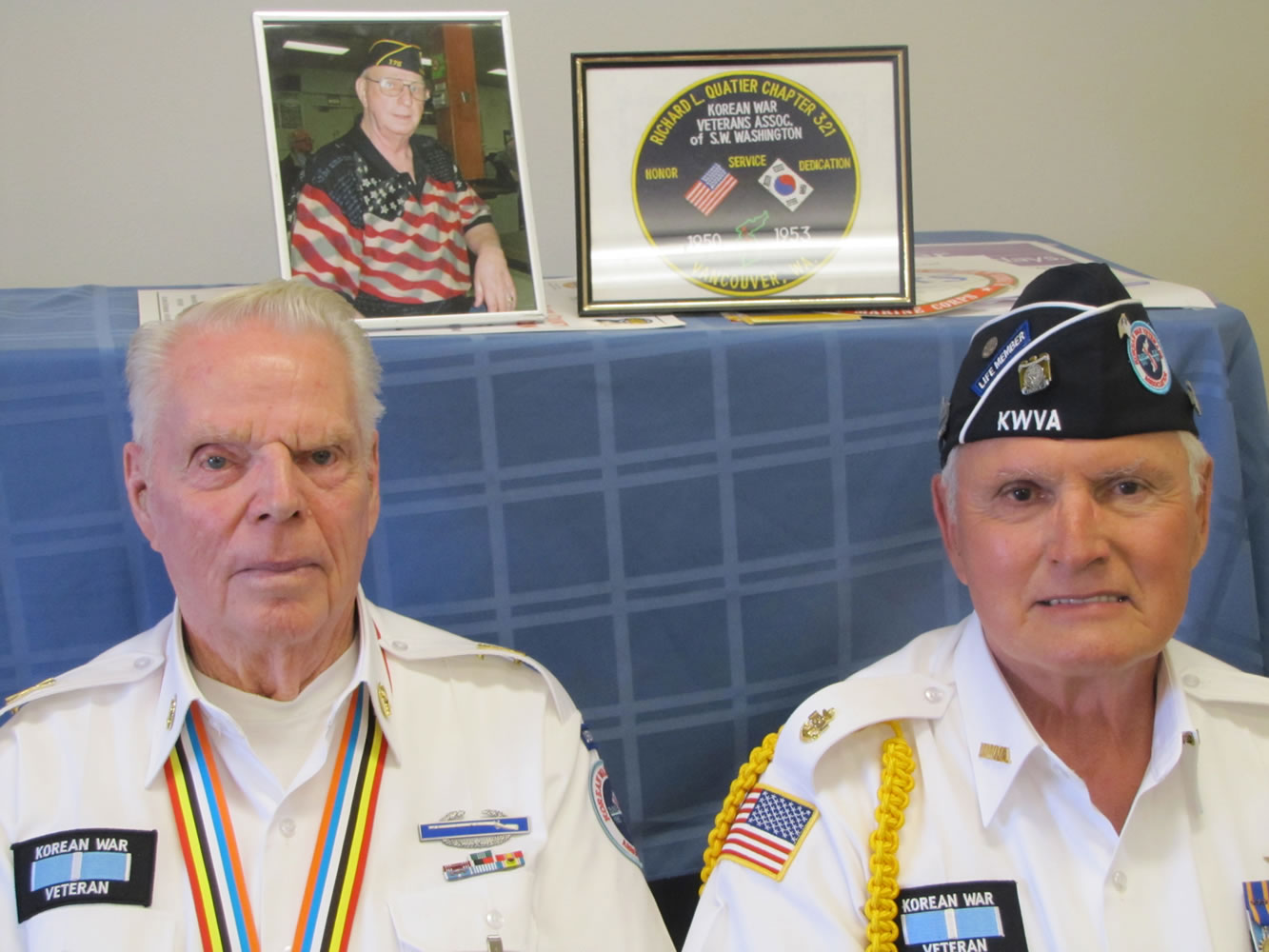o What: Korean War Veteran Medal Ceremony.
o When: 1 p.m. Aug. 11.
o Where: Armed Forces Reserve Center, 15005 N.E. 65th St.
o Information: Jerry Keesee, 360-573-1035; Hal Olson, 360-694-0279; or Bobby Worden, 360-263-3688.
The last time Carl Hissman received an all-expenses-paid trip to Korea, he wound up exchanging rifle fire with a Chinese soldier until they both ran out of ammunition.
By the time James Mead sailed in Korean waters, it no longer was a shooting war. But if things had suddenly gone that way, Mead said he could have clocked his life expectancy with an egg timer.
Things figure to be much more cordial when Hissman and Mead return to South Korea later this month. They will represent Washington during an event marking the 60th anniversary of the Korean War cease-fire.
o What: Korean War Veteran Medal Ceremony.
o When: 1 p.m. Aug. 11.
o Where: Armed Forces Reserve Center, 15005 N.E. 65th St.
o Information: Jerry Keesee, 360-573-1035; Hal Olson, 360-694-0279; or Bobby Worden, 360-263-3688.
As members of the local chapter of the Korean War Veterans Association, Mead and Hissman will be among 100 veterans who will travel to South Korea from July 25, through July 30.
“I always wanted to go back and see how it improved,” Hissman said following Wednesday’s meeting of Southwest Washington’s Richard L. Quatier Chapter of the Korean War Veterans Association.
Hissman said he landed in North Korea in November 1950 as part of the first big American offensive.
“We landed on Thanksgiving, and the Chinese ran us out on Christmas Eve,” Hissman recalled. “We went down to the south and worked our way north again.”
Hissman was in Korea for 14 months and 19 days, doing reconnaissance for a mortar unit. Hissman and his captain would take a Jeep and scout out mortar positions.
The captain had really wanted to lead a front-line unit, Hissman said, so their Jeep trips occasionally got pretty close to the action. On one trip, they were trapped overnight when the Chinese cut off their route; American forces cleared the road the next day.
On another trip, five Chinese soldiers popped up along the road, and the captain told Hissman to get out of the Jeep.
“I bailed out,” he said — leaving all his spare ammunition pouches in the Jeep.
He started firing at one enemy soldier.
“I ran out of ammo. He ran out of ammo,” Hissman said. “I went to the Jeep to get more ammo, and he took off.”
Mead served on a Navy destroyer on a series of six-month cruises from 1958-1962. The USS Duncan operated off the coast of Korea.
His time in the Korean theater “was not as eventful as Carl’s,” Mead said.
“We made sure the coast was secure,” Mead said. “As a radar picket ship, we were a couple of hundred miles ahead of our task force. We were getting radio messages from North Korea, saying we didn’t belong there.”
If the North Koreans had ever decided to renew hostilities, Mead said, “Our life expectancy was three minutes.”




